SWGO and cosmic ray showers
SWGO stands for "southern wide-field gamma observatory". It is an astrophysics experiment meant to detect and measure the shower of particles that are produced when very high-energy gamma rays impinge on the upper atmosphere and produce electrons, positrons, and secondary photons in large numbers. The two processes of pair production (where a photon exploits the presence of a nucleus to materialize an electron-positron pair) and bremsstrahlung (where an electron or a positron get in the electric field of an atom and emit a photon) work in tandem to multiply the shower exponentially, until the energy of photons is too small to produce further pairs.
The astrophysical interest of ultra-high-energy gamma rays is connected to their being faithful messengers of violent processes that take place in the cosmos - in the core of active galactic nuclei, or in star explosions, or in a number of other processes we are eager to study in more detail. Photons travel straight from their source to us, so by measuring their direction we have a clean way to understand where they were originated. In contrast, the same cannot be said of protons, that also hit our atmosphere and produce showers of secondaries (but with a more varied composition, which allows to tell them apart from photon showers). Protons are electrically charged, so they get deflected when they travel through magnetic fields, and they thus do not "point back" to their source.
In recent years, the field of "multi-messenger astrophysics" has become a thing, when we could start to correlate the signal from gamma rays, light of different frequencies (infrared to visible to ultraviolet), gravitational waves, and even energetic neutrinos. SWGO contributes to the global survey of multi-messenger sources, and at the same time aims to understand the energy spectrum of very energetic sources. To measure gamma rays of extremely high energy you need to detect and reconstruct cosmic ray showers that produce particles across kilometer-wide cones. And you need to do this at high altitude, as part of the shower does not reach the ground at sea level. So we need a large area to instrument with particle detectors, and we need to do this as high up as possible.
To detect the particles arriving on the (high-altitude) ground several techniques are possible, and they all have their own points of strength and weaknesses. By far, the most economical way to make a large surface an "active" particle detector is to instrument a body of water or ice with photomultipliers: a number of huge detectors are built with that concept, and they exploit the phenomenon called Cherenkov radiation.
Cherenkov radiation
When a particle travels at high energy (meaning that its total energy far exceeds its rest mass, such as e.g. an electron with an energy of 100 MeV, or a proton with E=10 GeV) we call it "relativistic": it essentially moves at the speed of light in vacuum, c=3*10^8 meters per second, or to be precise some tiny fraction below that. A relativistic particle that is electrically charged and enters a material of some kind -say water- will produce a shock wave because the electromagnetic field around it moves slower than the particle itself! In fact, photons (carriers of electromagnetic (EM) radiation) move at a speed which is c/n, not c, in a medium of refractive index n. The last time I looked, the refractive index of water was n=1.33, and that means those photons are very slow compared to the particle that emits them!
The ensuing phenomenon is akin to the one produced by ships moving faster than the speed of the waves in the water: there is a propagation of the accumulated signal from several point sources along the ship's path, which moves at an angle with respect to the ship's direction: a "wavefront" at a characteristic angle (the cosine of which equals c/n). The figure below explains what I am talking about.
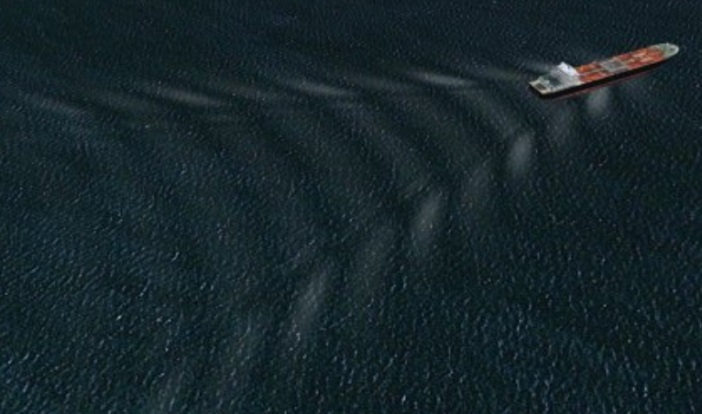
In the case of EM radiation, the wavefront materializes photons that are emitted at that characteristic angle - so it is a cone of light around the particle direction. Although the number of such photons (which have wavelength typically in the near ultraviolet) is smallish, the phenomenon is very useful for particle detection - just measure the flash of light on a photomultiplier and you know a particle has passed through! Or, if you want to be fancier, instrument the sides of a volume with high-granularity pads of photodetectors, and you get to reconstruct fancy cones that also tell you about the particle's identity and energy.
For the purposes of SWGO, just measuring the total light is sufficient to do two things: understanding the presence of particles hitting the tank, and determining whether they are muons (which allows the telling apart of proton from gamma originators of the showers). The idea is then to have many detector units that can be built and deployed on a wide area, such that when an energetic cosmic ray produces its shower, a good number of secondary particles from the shower can be counted in each unit, and measurements of position, angle, energy, and identity of the primary cosmic ray become possible.
Water is relatively inexpensive in most part of the world, but if you want a lot of it at high altitude, it may become tricky. An idea that bypasses the need to fill many detector tanks with water is to find a high-altitude lake, and deploy photomultipliers inside the lake. But this creates lots of headaches from maintenance, logistic, and environmental points of view.
Looking for the right place
There are only very few sites in the southern hemisphere which fulfil the requirements of being at high altitude, free for use, and not too far from civilization (in terms of electric power, internet connection, roads, facilities); if you add the need to carry water in large amounts there, the list actually narrows down a lot. Chile and Peru still offer several possibilities. A survey group visited most of the potential sites recently, and I could hear their report; the SWGO jury is still out on the question of which site to prefer. And now I had a chance to visit two of the most promising sites by myself.
As a side note...
My interest on the matter is multi-fold: first of all, of course as a member of the SWGO collaboration I would like to think on the question myself. Second, I have taken on a complex problem of finding the optimal layout of the detector units on the ground, to maximize the physics potential of the experiment. I am using for this purpose a complete software model (you could call it a "digital twin", although it is still in a rather "cut corners" form right now) of the detector, the particle showers, the reconstruction of the showers direction and identity, and the inference one would do at the end of a data taking period on the flux of high-energy photons. Since the whole model is built by a program that is capable of computing the partial derivative of every quantity with respect to the position of each tank on the ground, it becomes possible for the program to "learn" the most promising layout of tanks, i.e. the one that maximises a figure of merit connected to the scientific value of the results.
The sites
So yesterday Cesar Ocampo drove with me to two possible sites of the future SWGO array, both close to the town of San Pedro de Atacama. The first one is called "Pampa la bola", and it sits at 4800m above sea level. It is a rather flat plain surrounded by still higher peaks on all sides. The ground is suitable for driving trucks around (to install the detecting units, and bring water around to fill the tanks up) provided that a small "bridge" is built where a pipeline runs on the surface. The site can be reached with 1 hour of driving from San Pedro, or 2 hours from the closest airport (Calama), which is also where the water would be taken from.
Among the positive points of Pampa la bola there is the very good flatness of the surface, the higher altitude (which equates to higher fluxes of secondary particles from the showers, other factors being equal), and the closeness of infrastructure from the ALMA telescopes array (a set of radiotelescopes that lives on a plain a bit further south-west). A concern is the visual impact that a bunch of water tanks dispersed on the plain would have, but maybe nobody would notice or complain :-/
We then visited the nearby site of the Parque Astronomico, which is on the slope facing San Pedro of a nearby mountain. This area is on a slope - between 15 and 25 degrees - and it is a bit more rough terrain; I could imagine the discomfort of PhD students driving around to service this or that malfunctioning unit. Also, it was not clear to me that the total area available for the detectors would suit the needs of SWGO in a "grand plan" of full deployment of several thousand detector units.
Overall, I think I like the Pampa la bola option a lot. It still sounds a bit crazy to me to have to literally drive a thousand trucks filled with water from Calama to the detectors to fill them up; the possibility to get water on site by melting the occasional snow is there, but snow is not a phenomenon you can give for granted in this area - we are very close to the Atacama desert.
Below I offer, without commentary, a few pictures documenting my visit to the two sites.
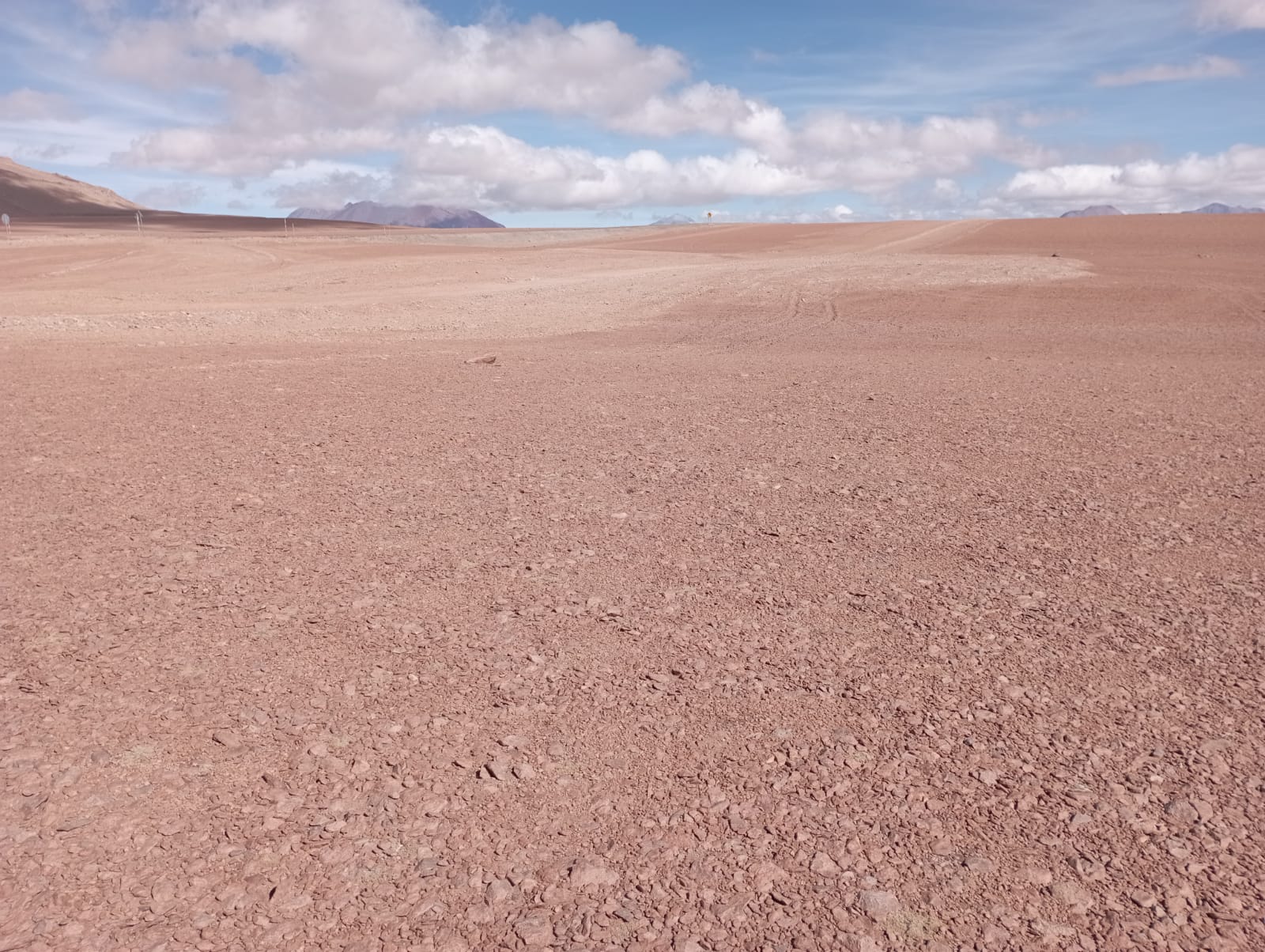
Above, the ground at Pampa la bola, looking north toward the border with Bolivia.
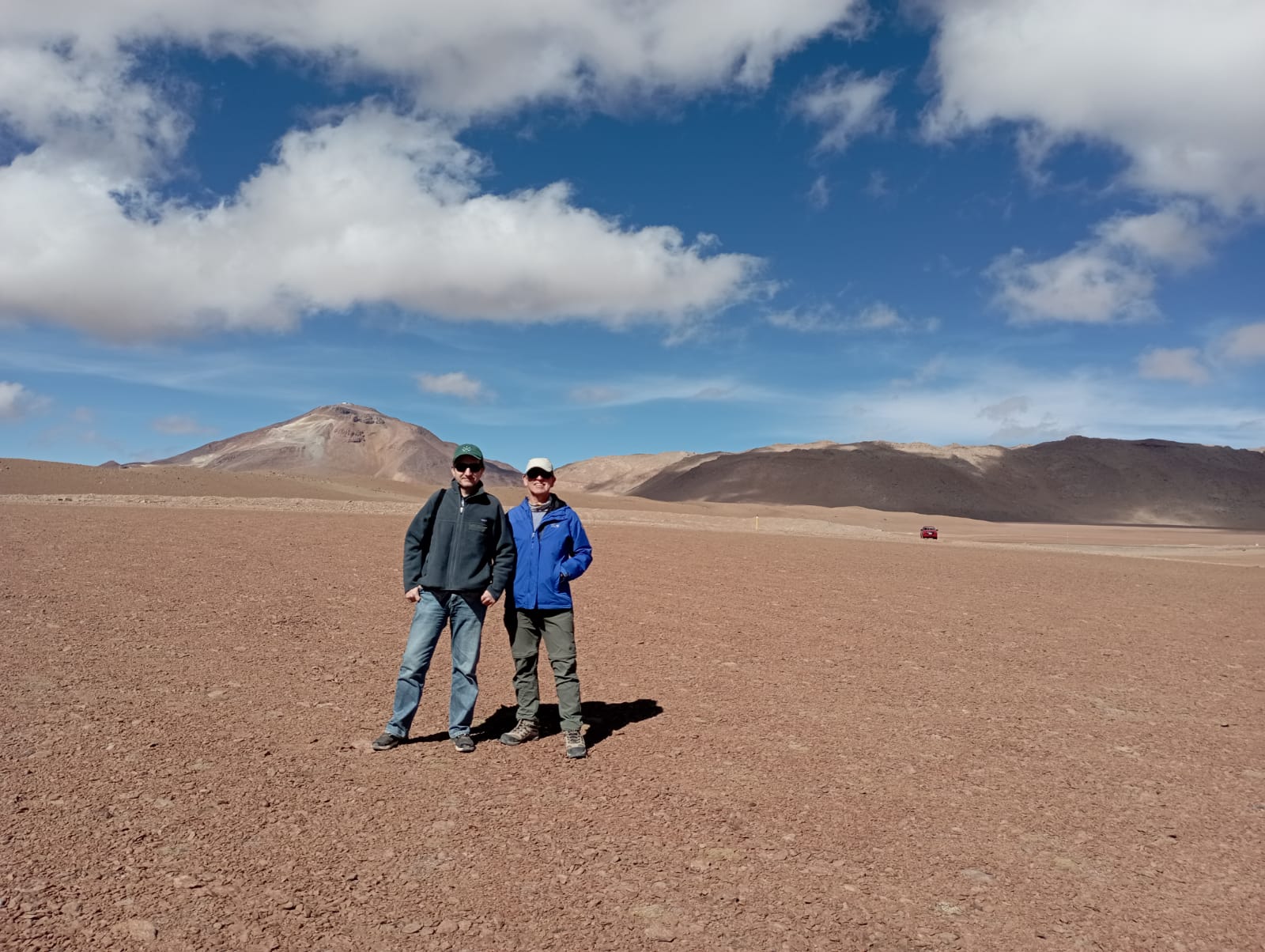
Cesar and I at Pampa la bola, looking west toward the peak of the nearby mountain where a Tokyo-run infrared telescope sits (at 5600m above sea level, the highest telescope in the world if I am not mistaken). Our car is in the background.
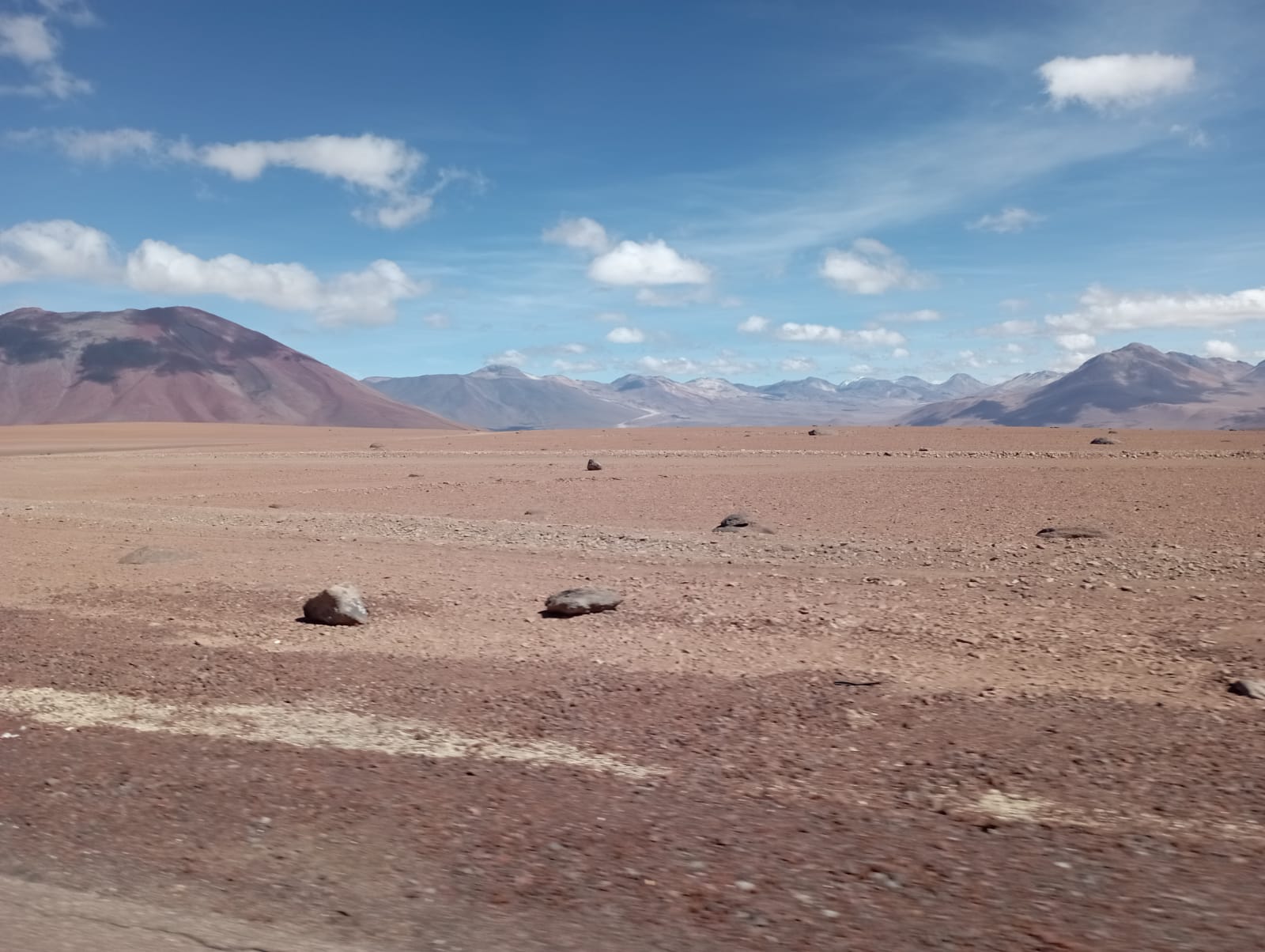
A picture taken from the moving car, looking toward the mountain range separating Pampa la bola from Argentina on the east side.
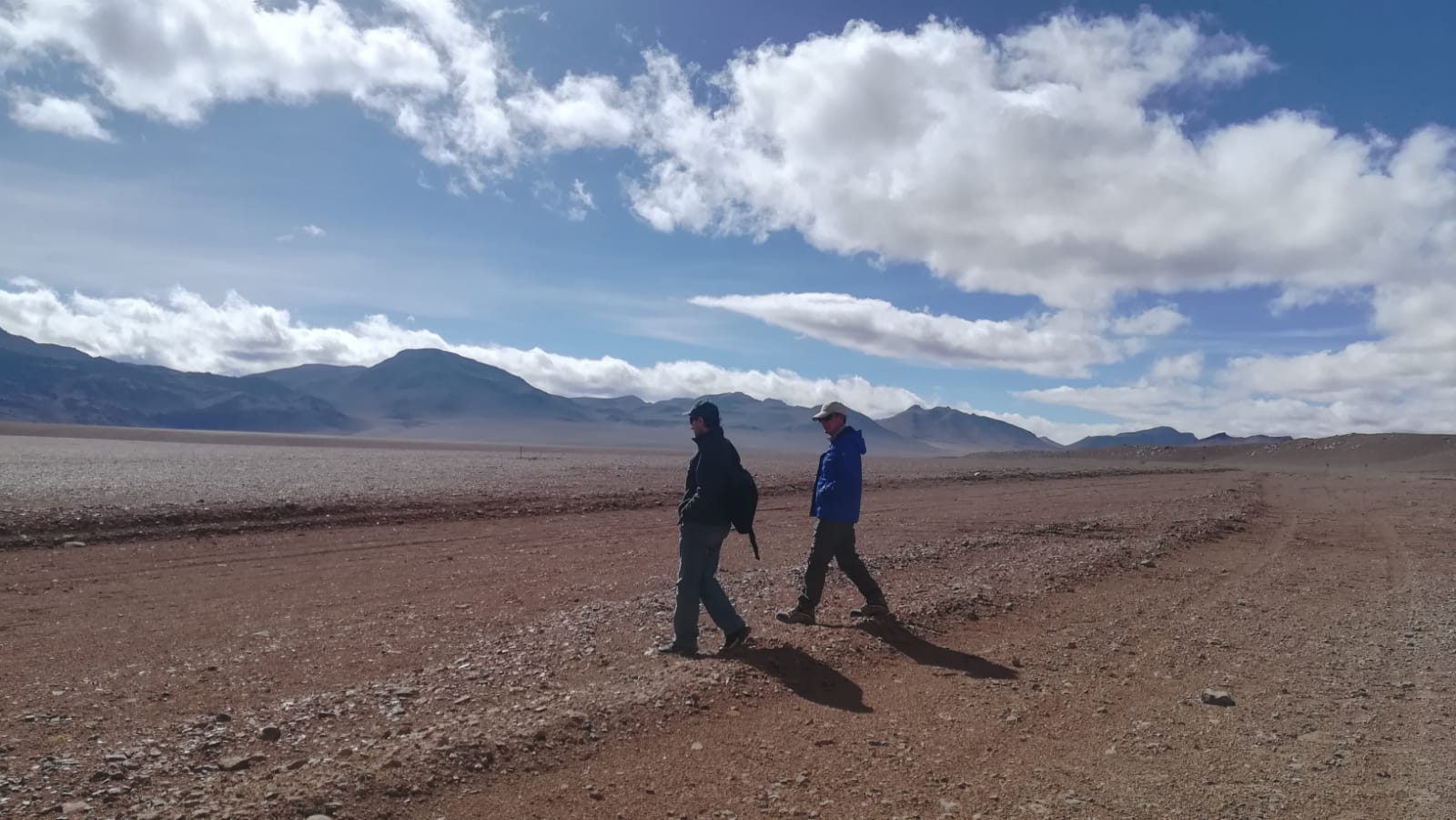
Cesar and I are walking on the flattish ground. I think the black stripe on the left is where a pipeline runs (and which must be protected if we want to run trucks above it).
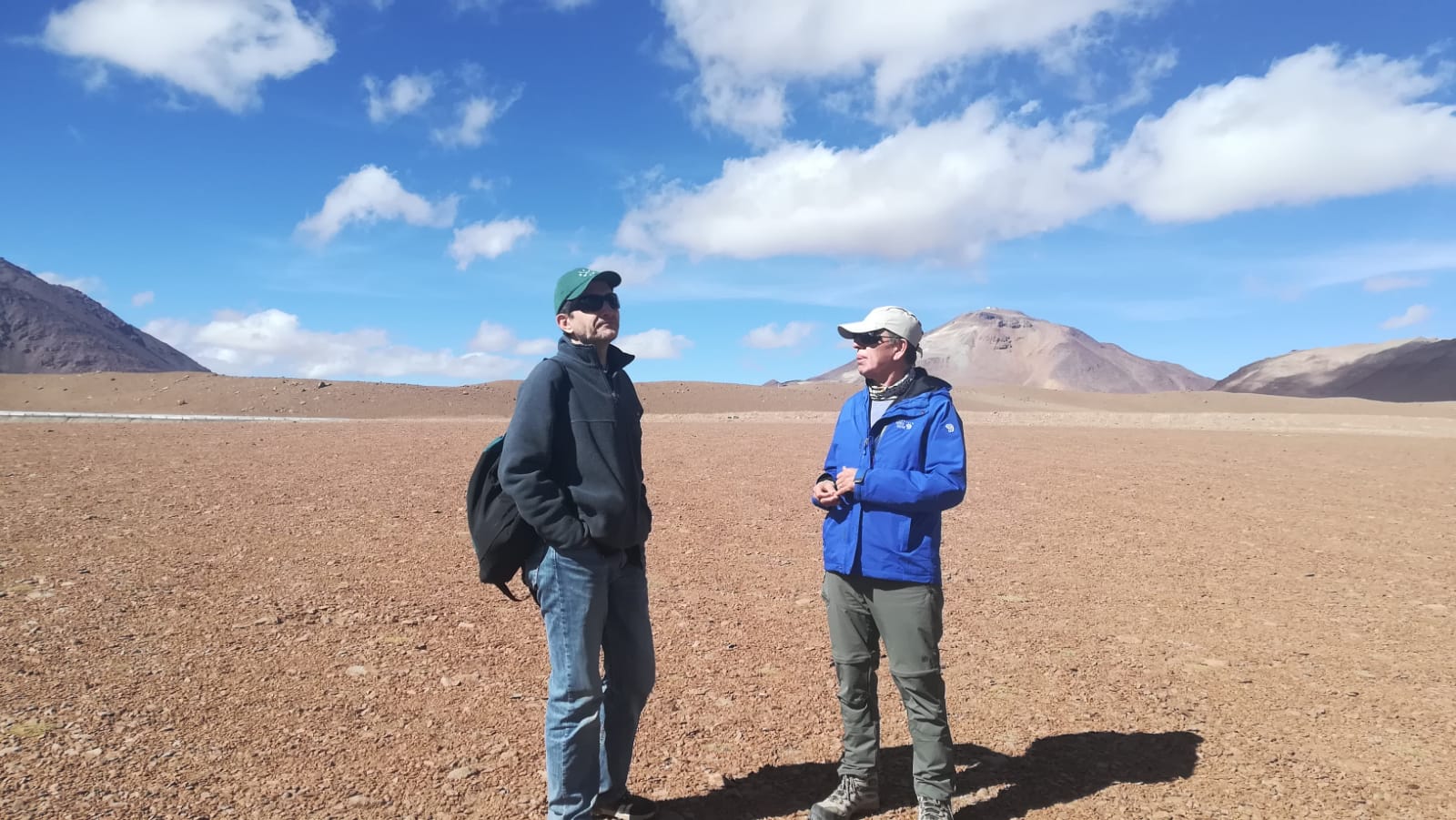
Another picture facing west at Pampa la bola.
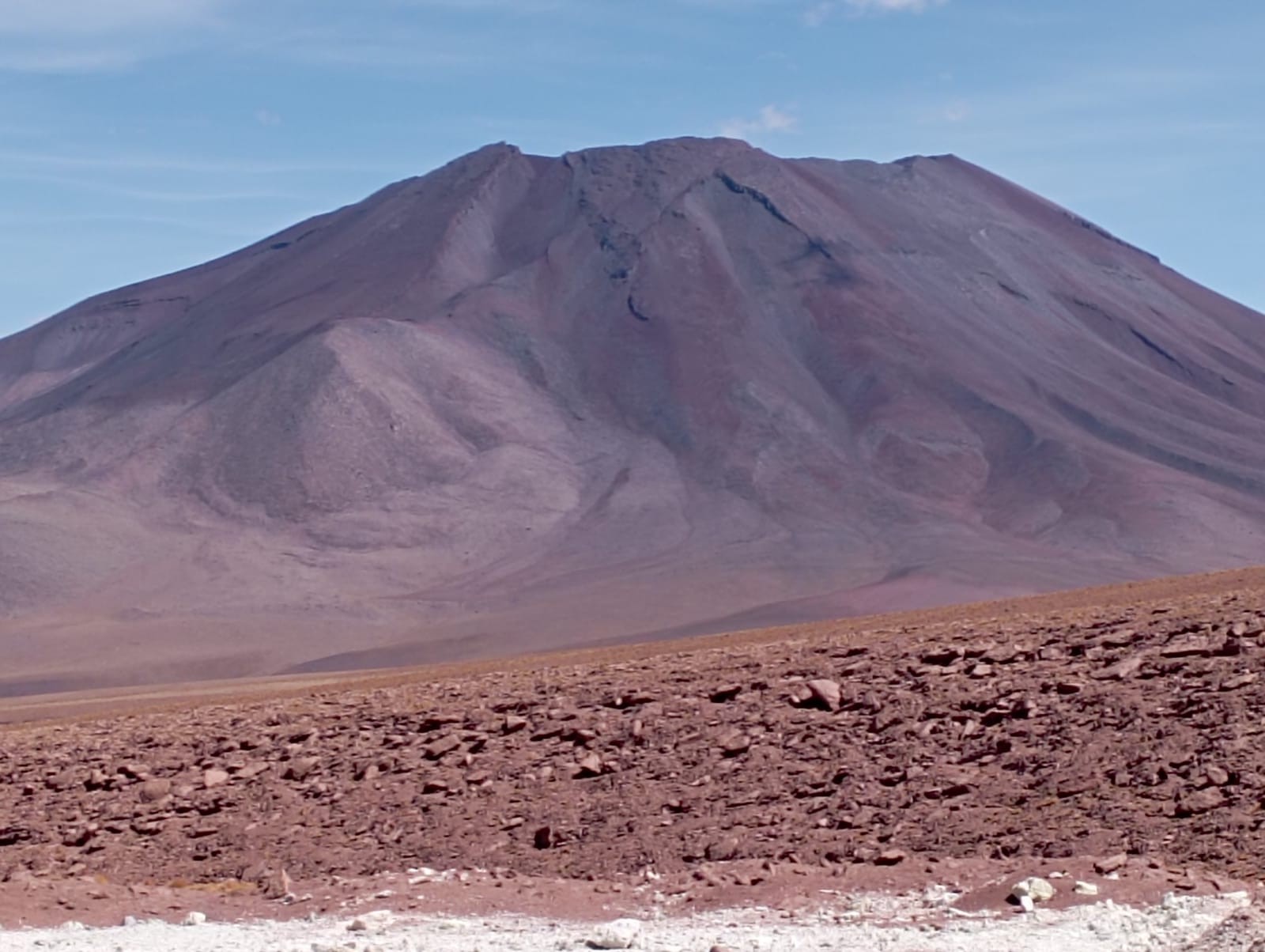
A view of the volcano sitting at the north side of the Parque Astronomico site. Notice the slope and the rougher terrain of this site.
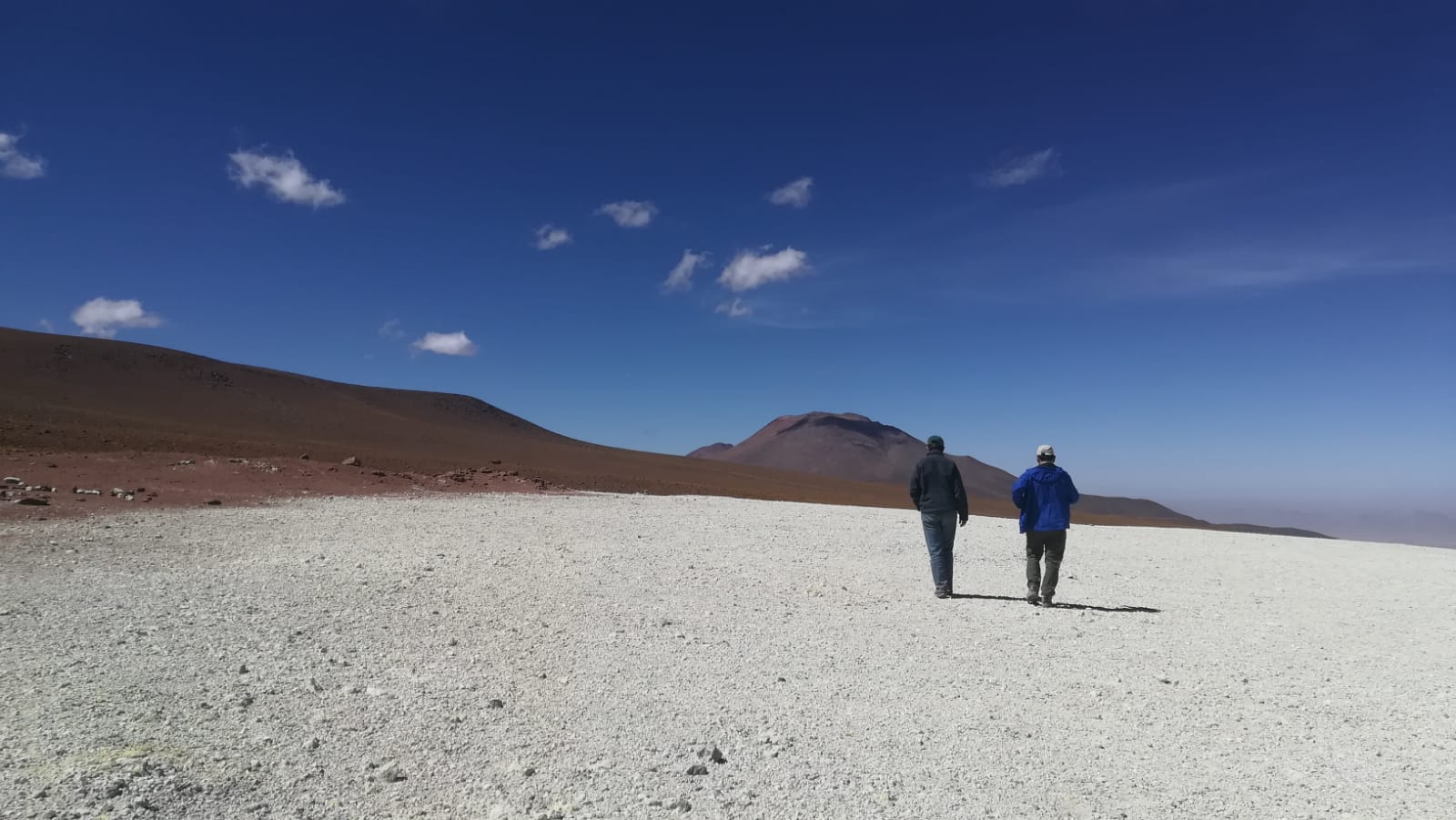
Another pic of the Parque Astronomico site looking south. The whitish ground here is from sulphur-rich mineral mined nearby and dumped here.




Comments